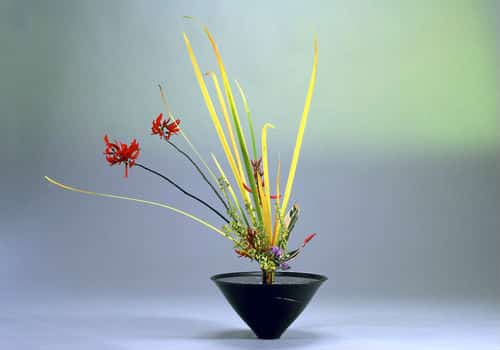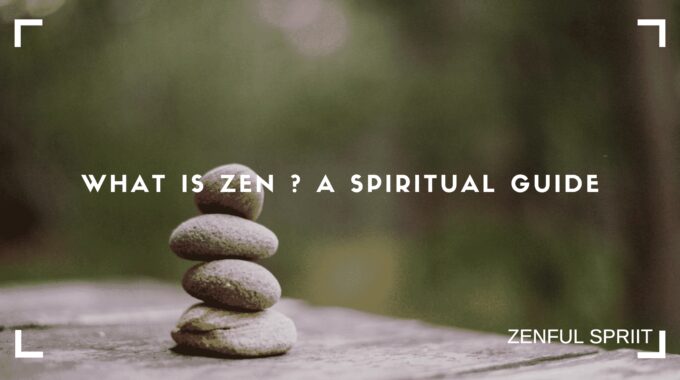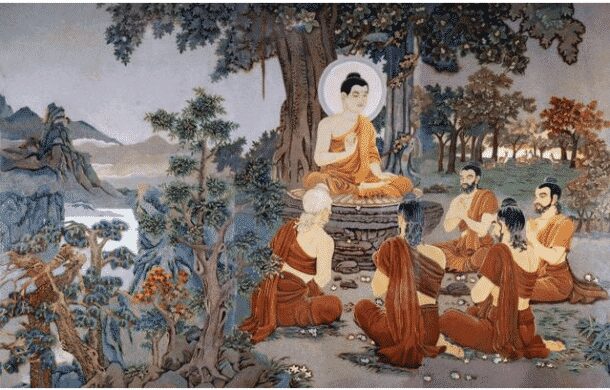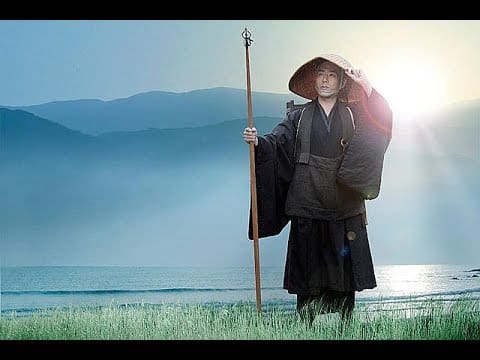Ikebana or kado is the beautiful, often strikingly minimalist, Japanese flower arrangement art. Ikebana means “giving life to flowers” and kado translates as “the way of flowers”. While flower arrangement for many people in the West consists of symmetrically arranging flowering plants in a vase, and Western floral design typically emphasizes flowers and color, ikebana tends to be more minimalistic and more focused on the sculptural lines, proportions, and shape of the arrangement.
Ikebana is the Japanese art of flower arranging. It’s a tradition that goes back centuries, and its design principles are governed by specific rules and techniques. But, as with any art, creativity and self-expression are part of the process. It takes many years of study to earn the required skills for a perfect arrangement. The artist attempts to express his own feelings as well as his impressions of nature. Sometimes this will include indications of the passage of time, such as a weatherworn branch. However, the artist does not simply present the flowers as they exist in nature, he also tries to arrange them in a way that gives them a new meaning and expression.
The philosophy behind the study of ikebana is that it is a meditative art and that our inner self comes out in the arrangement we make. The focus of an ikebana arrangement is typically on the sculptural line created by the tallest branch and the space around it. Most arrangements have just a few flowers, and always an uneven number of them. The overall impression is minimalist and asymmetrical, yet harmonious and balanced. Ikebana is a contemplative art; creating an ikebana display involves identifying the most powerful, eye-catching lines of the design, then manipulating the components to emphasize the strongest angles by gently bending stems and trimming leaves.
The origins of Ikebana stretch back over 500 years. Over the centuries, Ikebana evolved into different schools and styles, of which the most popular are Ikenobo, Sogetsu and Ohara. The first ikebana school was established by the priests at Rokkaku-do temple, Kytoto, in 1462. The oldest Ikebana manuscript, “Kao irai no Kadensho” dates from 1486. The famous “Senno Kuden” manuscript, by the founder of the Ikenobo School of Ikebana, was written in 1542. There are also different styles, depending on the school, the historical periods, the theories of artistic composition, the plants and vase they use. The main styles are: rikka (“standing flowers”), shōka (“living flowers”), nageire (“thrown in”), moribana (piled up flowers”), zeugata, or the free style and zeneibana, the avant-garde style.
When Buddhism was introduced to Japan in about 538A.D, by Chinese Buddhist missionaries who had formalized the ritual of offering flowers to the Buddha, the monks started to arrange flowers to decorate the altars of temples. In the Heian period (794-1192), appreciating flowers in a vase unrelated to religious worship also became popular. In the Kamakura period (1192-1333), the Samurai (elite warrior class) brought great lifestyle and fashion changes into the whole of Japanese society. At this time it became fashionable to create a Tokonoma, a small sacred alcove, in a zashiki (Japanese room). The Tokonoma would contain a flower arrangement, incense, and a candle and is the reason that traditional styles of Ikebana are designed to be viewed only from the front. By the second half of the 15th century, Ikebana had grown into a separate art form distinct from its Buddhist origins. During the 16th century, the tea ceremony became widespread and Ikebana was incorporated into it.
Today there are over 3,000 ikebana schools in Japan, each with their own distinctive styles, but all of them can trace their history back to Ikenobo. Ikebana schools can now be found all over the world, bringing the beauty of form and color to millions of people.
Ikebana is the celebration of the beauty and mystery of nature. Ikebana floral art consists of only a minimal number of blooms interspersed with branches and leaves – simplicity and graceful lines are the most important keys. Ikebana is more than simply putting flowers in a container. Ikebana is a disciplined art form in which the arrangement is a living thing, where nature and humanity are brought together. The proportions that govern traditional ikebana designs can be described in terms of religious symbolism. The tallest branch represents heaven. A second stem that’s two-thirds the height of the tallest element represents man. A final component, symbolizing earth, is a third smaller than the middle-sized element, hovering near the base of the arrangement.
Photo credit: flickr
artfloralikebana




